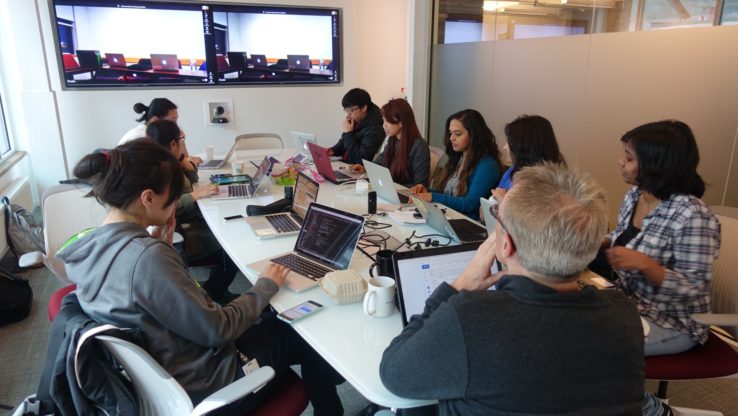HS-LS3.B Variation of Traits
In sexual reproduction, chromosomes can sometimes swap sections during the process of meiosis (cell division), thereby creating new genetic combinations and thus more genetic variation. Although DNA replication is tightly regulated and remarkably accurate, errors do occur and result in mutations, which are also a source of genetic variation. Environmental factors can also cause mutations in genes, and viable mutations are inherited. (HS-LS3-2) Environmental factors also affect expression of traits,…
HS-LS3.A Inheritance of Traits
Each chromosome consists of a single very long DNA molecule, and each gene on the chromosome is a particular segment of that DNA. The instructions for forming species’ characteristics are carried in DNA. All cells in an organism have the same genetic content, but the genes used (expressed) by the cell may be regulated in different ways. Not all DNA codes for a protein; some segments of DNA are involved…

Advancing Sustainable Agriculture
ISB’s Project Feed 1010 is building a global, crowd-sourced network of educators, students, researchers and farmers to optimize and scale-up sustainable agriculture practices and educate the future scientific workforce. To support this global network, we have partnered with Northeastern University to develop database, web and mobile infrastructures with functionalities for data tracking, monitoring, analytics and predictive modeling. More than 20 graduate-level computer science students enrolled in an interactive course have…
HS-LS2.D Social Interactions and Group Behavior
Group behavior has evolved because membership can increase the chances of survival for individuals and their genetic relatives. (HS- LS2-8) source: http://www.nextgenscience.org/
HS-LS2.C Ecosystem Dynamics, Functioning, and Resilience
A complex set of interactions within an ecosystem can keep its numbers and types of organisms relatively constant over long periods of time under stable conditions. If a modest biological or physical disturbance to an ecosystem occurs, it may return to its more or less original status (i.e., the ecosystem is resilient), as opposed to becoming a very different ecosystem. Extreme fluctuations in conditions or the size of any population,…
HS-LS2.B Cycles of Matter and Energy Transfer in Ecosystems
Photosynthesis and cellular respiration (including anaerobic processes) provide most of the energy for life processes. (HS-LS2-3) Plants or algae form the lowest level of the food web. At each link upward in a food web, only a small fraction of the matter consumed at the lower level is transferred upward, to produce growth and release energy in cellular respiration at the higher level. Given this inefficiency, there are generally fewer…
HS-LS2.A Interdependent Relationships in Ecosystems
Ecosystems have carrying capacities, which are limits to the numbers of organisms and populations they can support. These limits result from such factors as the availability of living and nonliving resources and from such challenges such as predation, competition, and disease. Organisms would have the capacity to produce populations of great size were it not for the fact that environments and resources are finite. This fundamental tension affects the abundance…
HS-LS1.C Organization for Matter and Energy Flow in Organisms
The process of photosynthesis converts light energy to stored chemical energy by converting carbon dioxide plus water into sugars plus released oxygen. (HS-LS1-5) The sugar molecules thus formed contain carbon, hydrogen, and oxygen: their hydrocarbon backbones are used to make amino acids and other carbon-based molecules that can be assembled into larger molecules (such as proteins or DNA), used for example to form new cells. (HS-LS1-6) As matter an energy…
HS-LS1.B Growth and Development of Organisms
In multicellular organisms individual cells grow and then divide via a process called mitosis, thereby allowing the organism to grow. The organism begins as a single cell (fertilized egg) that divides successively to produce many cells, with each parent cell passing identical genetic material (two variants of each chromosome pair) to both daughter cells. Cellular division and differentiation produce and maintain a complex organism, composed of systems of tissues and…


